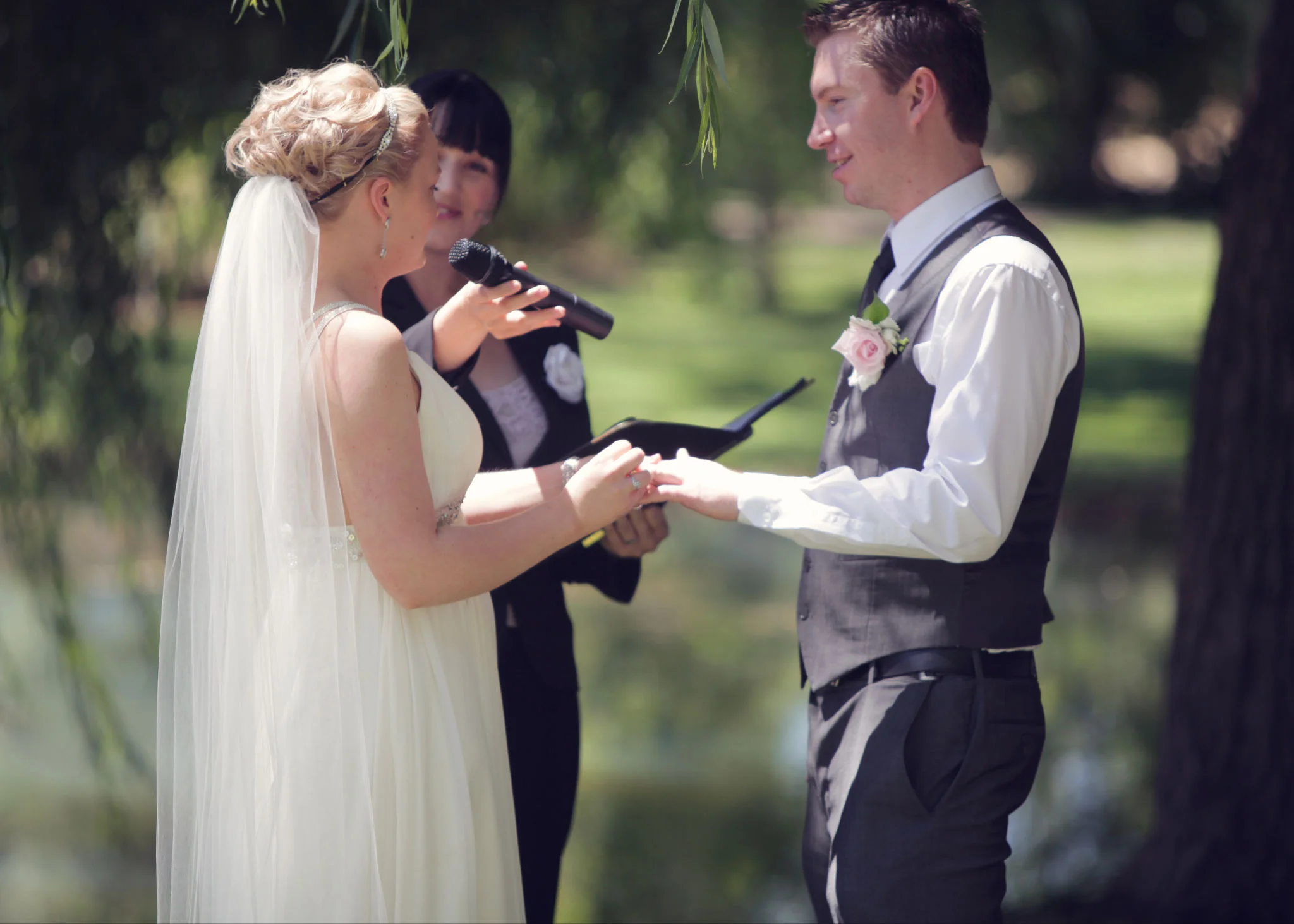Give good mic - Part 2
I can certainly understand how, if you don't use a mic in your line of work or on a regular basis, it can be a bit intimidating to have to use one on one of the biggest days of your life.
In Giving good mic - Part 1 we learned that getting the attention of your guests (and keeping it) is as much about being heard as it is about a heartfelt and relevant ceremony. And now we can all (albeit begrudgingly) agree that mics are not evil and are in fact very helpful.
So in the interests of keeping your stress levels low and your confidence high, here are my answers to the top 3 questions about mics that I am asked by my brides and grooms.
Do I need a mic for my wedding ceremony?
The answer is YES, if:
- you are having 30+ guests indoors/20+ guests outdoors
- your ceremony is being held on a beach or other public place
- your ceremony venue is located anywhere near traffic
What kind of mic is best to use for wedding ceremonies?
The most common type of handheld microphone that celebrants use are the wireless unidirectional/cardioid type. Having come from a music background, I understand their advantages and limitations, especially when working outdoors. But I also believe that you shouldn't need a degree in music performance to have a wedding ceremony that is clear and audible for your guests. So if you are not experienced with mics, please let your celebrant hold it for you.
How do I get the best sound from a handheld unidirectional mic?
The most common placement technique for these mics is to point the mesh windscreen towards the speaker's nose or to place the side of the windscreen on the speaker's chin so the sound travels across the top and not directly into it. This positioning reduces the likelihood of distortion, popping and hissing through the speaker.
However, as most of my ceremonies are outdoors at wineries, gardens and parks, I don't often have the sonic luxury of an environment of relative silence while I'm speaking. This means that my voice and that of my couples need to compete with a lot of other sounds like waves crashing on the beach, loud gusts of wind, rumbling motorbikes going past, thundering planes overhead, animals and, the most unpredictable distraction of all, children.
For me, this means pointing the mic directly at the speaker's mouth (shock, horror!) I advise guests who are doing readings, if they position the mic like they are about to eat it and keep the mesh windscreen 10-15cm from their mouth, that we will get the best result possible and I adjust the gain and tone on the mic channel to compensate for people who are exceptionally loud or quiet talkers. I also find that, when inexperienced mic users start speaking with the mic pointing at their mouth, they sometimes inadvertently drop their elbow and the resulting 'mic slide' means that they end their speech or reading with the mic pointed at their nose anyway.
What's your experience of microphones at wedding ceremonies? Good or bad?








